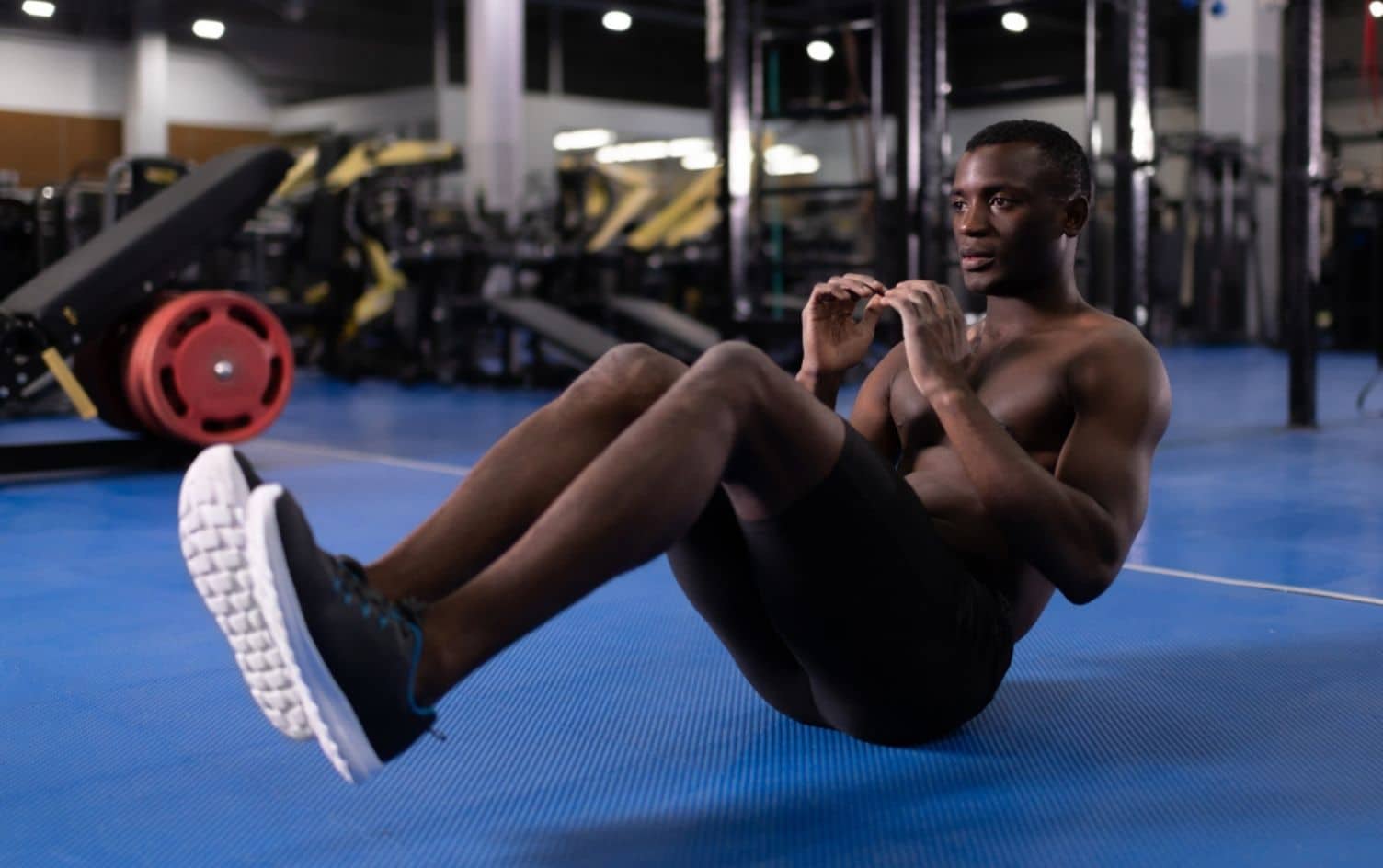No muscle group receives more time and attention at the gym than the abdominals. Core training targets your “six pack” muscles in the front and obliques on the sides and can be done in countless ways. However, traditional core training often misses the mark when it comes to building strong, toned abs.
Here are three core training mistakes to avoid and swaps for smarter, safer alternatives:
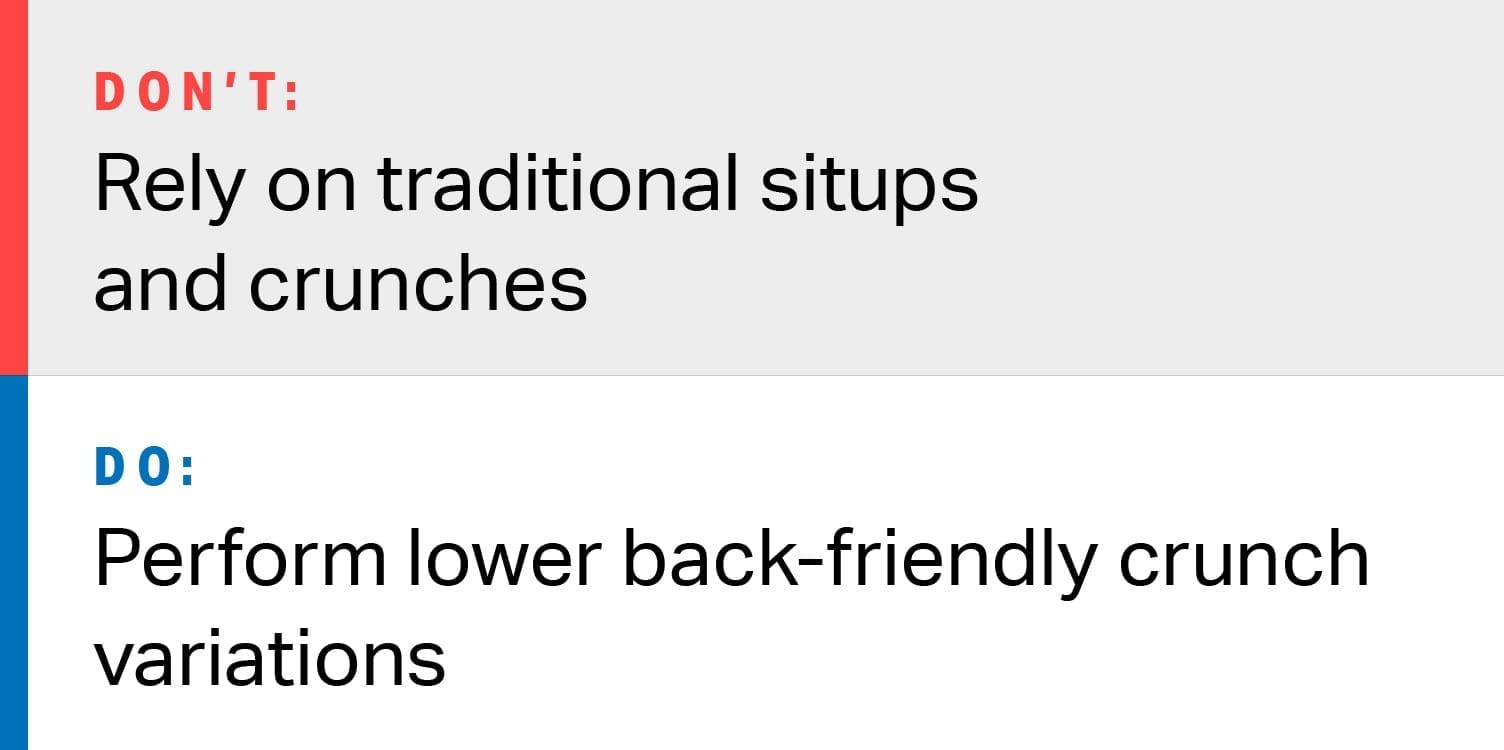
Situps and crunches might make your abs burn, but they could torch your lower back in the process. Stuart McGill, one of the world’s foremost experts on spinal health, published research showing the mechanical action of the spine during situps and crunches can cause disc bulging and herniation over time. But there’s good news: You can strengthen your core without hurting your back.
The reverse crunch keeps all the ab-building benefits of situps without the back pain by — you guessed it — reversing the crunch motion. Rather than planting your lower back on the ground and lifting your torso toward your knees, you anchor your upper body on the floor by holding a weight behind your head and then use your abs to pull your knees, hips and lower back toward your torso. This allows the spine to move naturally without mimicking the movement that replicates disc herniation.
REVERSE CRUNCH
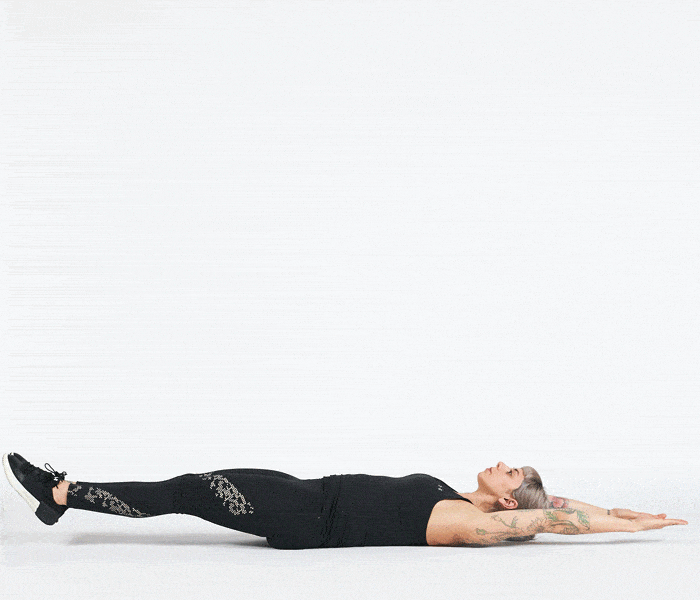
The move: Start by holding onto an immovable object (like a squat rack or bench bolted to the ground) and gradually move to a lighter anchor (like a dumbbell or medicine ball) or no anchor as you get stronger. Then, using your abs, pull your knees, hips and lower back toward your torso and lower back down.
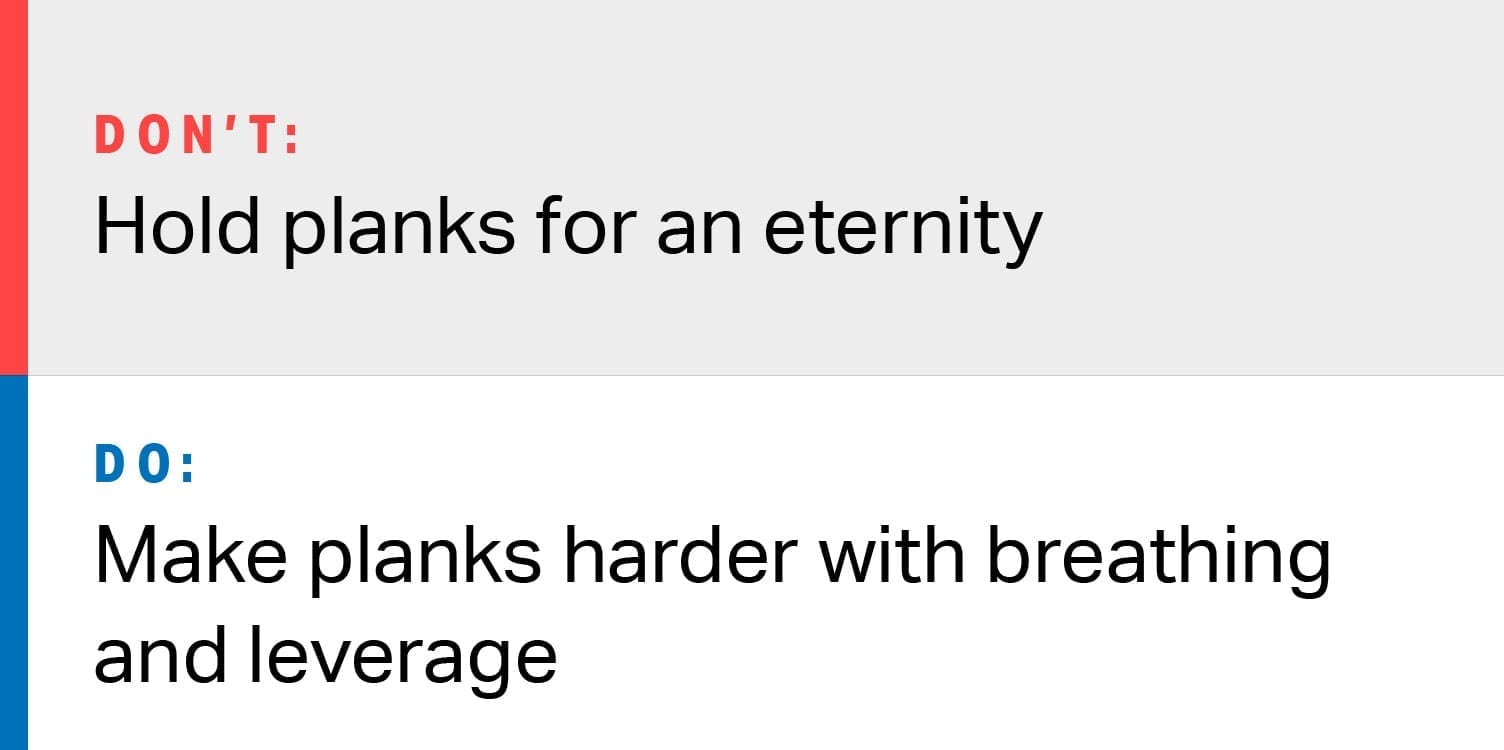
Planks are simple and effective, if not a bit boring. Want to make planks more boring? Hold them for as long as possible.
To be fair, holding a plank for 10–30 seconds is plenty challenging for many people. However, once you get strong enough to hold a plank beyond half a minute, adding more time isn’t practical. Who wants to spend most of their workout doing planks just to get a good core burn? Instead, make planks harder by adding focused breathing and changing your leverage.
Holding a plank for time focuses only on quantity, not quality. Rather than doing planks for a certain number of seconds, focus on the number of breaths per set — a full inhale through your nose and full exhale through your mouth counts as one rep. Your abdominals are important respiratory muscles, and your core burns and shakes like crazy when you focus intently on breathing. Try lengthening the lever of your planks. Long-lever planks turn a simple exercise into sweet torture.
LONG-LEVER PLANK

The move: Simply take your standard plank position and move your elbows further out in front of you without letting your hips sag toward the floor. Start by moving your elbows just an inch or two and gradually move them further away as you get stronger.

First things first: You can’t use exercise to spot-treat your way to a slimmer waist. Nutrition is your main tool to create the caloric deficit necessary to burn fat. Plus, spot reduction is largely a myth. You can’t pick and choose where your body loses fat based on what exercises you do. However, if you want a smaller midsection, consider avoiding core exercises that create hypertrophy (increased muscle size) in your obliques, such as dumbbell side bends. Opt for core movements like side planks and Pallof presses that resist rotating or bending at the waist.
Why side planks and Pallof presses? Because they’re isometric exercises, which means you hold a fixed position and don’t move. Isometrics are great for building strength but don’t do much for adding muscle mass. For example, holding a wall sit won’t add size to your thighs like squats or lunges. Side planks and Pallof presses strengthen your obliques without increasing muscle size around your midsection. Couple this approach with a smart nutrition plan and you’ve got a recipe for a slimmer waist.
READ MORE > 10 PLANK VARIATIONS TO CHALLENGE YOUR CORE
PALLOF PRESS
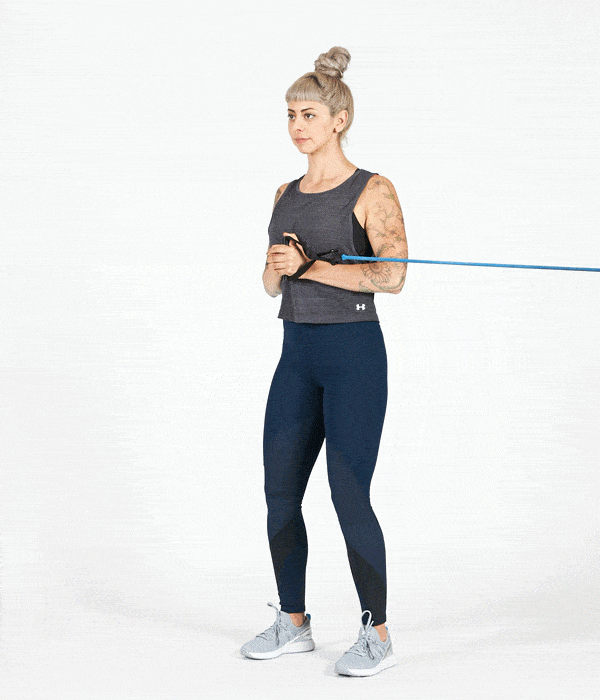
The move: Anchor a resistance band at chest-height. Facing the anchor sideways, grip the ends against your chest with both hands. Walk away from the anchor point until you feel tension in the band. Brace your core and press your hands in front of your body until your arms are fully extended. Resist rotating at the torso and hips. Bring your hands back to your chest and repeat. Complete all reps on one side before turning around 180 degrees and repeating on the other side. To make the move harder, step further away from the anchor point or use a thicker band.
Check out “Workout Routines” in the app to discover and log a wide variety of routines, or build your own routine with exercises that fit your goals.
